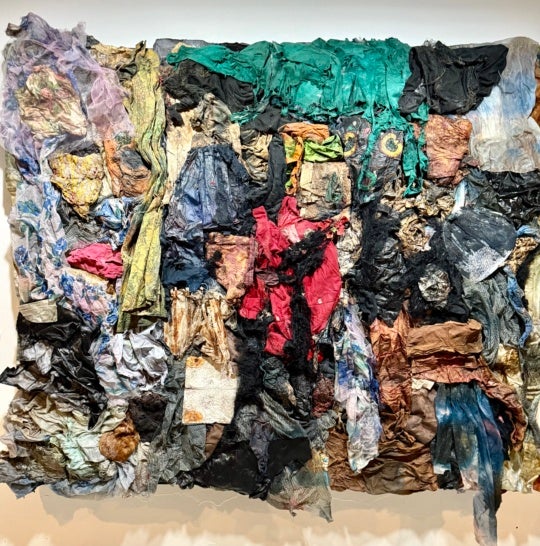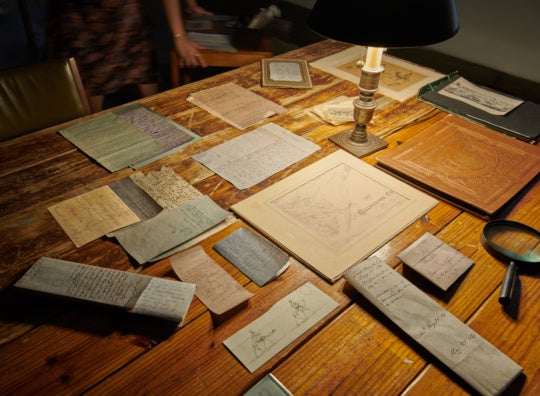
Hagedorn Foundation Gallery recently presented Suburbia, featuring work from Martin Adolfsson, Jonathan Lewis, Sarah Malakloff, Brian Ulrich and Christina Price Washington [February 1st – March 16th 2013]. The exhibition features a cast of photographers who aim to reveal a malaise of suburban life with distant, eery and pensive work. Spread throughout the two floors of the Hagedorn Foundation Gallery, the photographs guide the viewer through a well-developed tour of the ideals of suburbia and the psychological impact of conformity.
Brian Ulrich traces the idealism of suburbia back to it’s roots by enlarging vintage negatives from the 1950s of department store mock-ups, grocery store grand opening celebrations, and advertisements. This is a drastic departure from his best-know and decade long project, Copia, which captures architectural giants such as malls and other defunct commercial buildings. Through Copia—which is a body of work mostly void of people—Ulrich reveals a sadness about the massive weight of waste American spending culture has landed on our souls. Ulrich’s work on view then almost reads as simultaneous root and parody of said commercial culture.
Where Brian Ulrich focuses on the failure of society, Martin Adolfsson focuses on the failure to sustain the personal. In his large color photographs, Adolfsson reveals the staged interiors from homes for sale in countries outside the USA. Oddly, these scenes feel like outdated catalogue images or some perverse physiological joke played on the viewer, but quite distinctly, read nothing like a home. The realization gained from Adolfsson’s work is that in societies based on commerce, the unique has no market because supply and demand is rendered obsolete. So, in order for homes to sell, they have to appear reproducible, ordinary and void of imperfections. This conceptual point is driven to climax in one of Adolfsson’s photographs: On a bedside table there are two frames containing the exact same family portrait.
Though the exhibition starts on the ground floor with Christina Price Washington’s photographs, it feels like her works would better serve as exhibition endnote due to the contemplative space they create. In Washington’s exquisite color prints, texture and light are examined as pensive and heartfelt moments of the psyche. Three groupings echo along the walls of the gallery: Grass appears to be a photographic examination of the wave-like patterns in grass, which fill the frame and transpire to meditative moments; In Window, sunlight appears like ghosts on the walls of an anonymous home. Through Washington’s work, viewers are confronted with emptiness with hints of something deeper that’s beyond the surface; one can feel the transformation of the suburban malaise into a dream from which to wake.
Suburbia was smartly curated and inclusive of refreshed ideas that discuss the discord of suburban life. From a historic document provided by Brian Ulrich to the psychological impact captured in Christina Price Washington’s work we are guided through time to see the consistent goals of consumer culture and the contemporary boredom that is the result of such social passivity.




